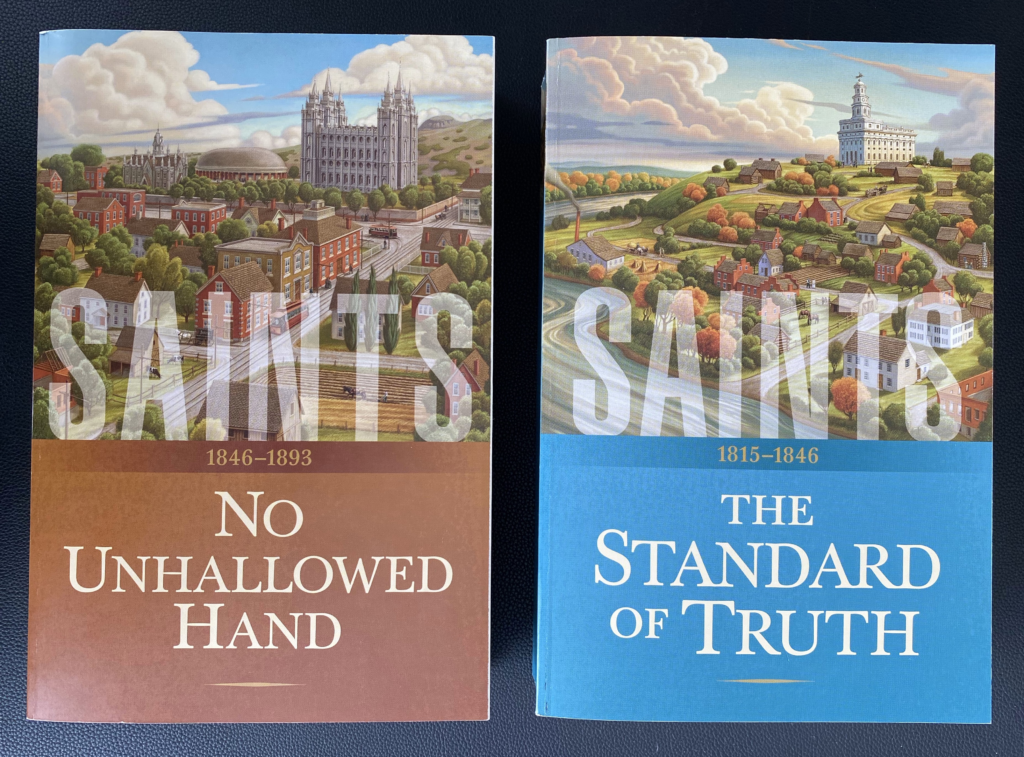
By Study
One of the most common ways to study Church history is chronologically. For beginners, the best way to lay a foundation for understanding Church history is to read all four volumes of Saints: The Story of the Church of Jesus Christ in the Latter Days. These books are available for free in the Gospel Library App or online at the Church’s website. Two of the volumes are currently available, and the other two are being written.
For those who wish to build a Church history library at home, these four volumes should be considered essential. They can be purchased in hard copy form by members at the Church’s online store or by anyone at the following links:
Assignment
Read the available volumes of Saints: The Story of the Church of Jesus Christ in the Latter Days.
An important part of understanding history is learning how histories are written. To understand how and why Saints was written, you should also watch the following videos:
A New History for the Church (short video prepared by the Church to introduce Saints)
Making “Saints” A New Narrative History of the Church (a Church-produced video that explains the writing of Saints)

By Faith
Reading the volumes of Saints and watching the videos on how and why they were written will in part help you understand the history of the Church. But not completely. Unless you see these events through a spiritual lens, some aspects of them will never make sense to you. To comprehend them, you will need spiritual understanding. You need to see by faith.
Assignment
The Book of Mormon is fascinating intellectually, and a great deal has been written about it since its original publication in 1830. But it also becomes a tool for spiritual growth if approached on its own terms.
In this book of scripture, Nephi describes the “a round ball of curious workmanship,” also known as the Liahona, which has two functions. First, this compass “pointed the way whither we should go.” Its “pointers,” he explained, “did work according to the faith and diligence and heed which we did give unto them.” Second, the Liahona displayed “writing, which was plain to be read, which did give us understanding concerning the ways of the Lord; and it was written and changed from time to time, according to the faith and diligence which we gave unto it.” (1 Nephi 16: 10, 28, 29; Alma 37:38)
Many years later, Alma the Younger emphasized to his son Helaman that the instrument worked only “if they had faith to believe that God” could make it function. “These things,” Alma said, “are not without a shadow.” “For behold, it is as easy to give heed to the word of Christ, which will point to you a straight course to eternal bliss, as it was for our fathers to give heed to this compass, which would point unto them a straight course to the promised land. And now I say, is there not a type in this thing? For just as surely as this director did bring our fathers, by following its course, to the promised land, shall the words of Christ, if we follow their course, carry us beyond this vale of sorrow into a far better land of promise.” (Alma 37:40, 43-45)
Those who read the Book of Mormon with spiritual yearning will understand not only the general direction they should go in their lives but also perceive specific answers to questions they may have. Thus, from a spiritual perspective, the book can be a Liahona to those willing to approach it from a spiritual, not merely intellectual, perspective.
As a starting point in understanding Church history spiritually, read the Book of Mormon and follow the directions in Moroni 10:3-5. To understand spiritual promptings better, read chapter 4, “How Do I Recognize and Understand the Spirit?” from Preach My Gospel: A Guide to Missionary Service.